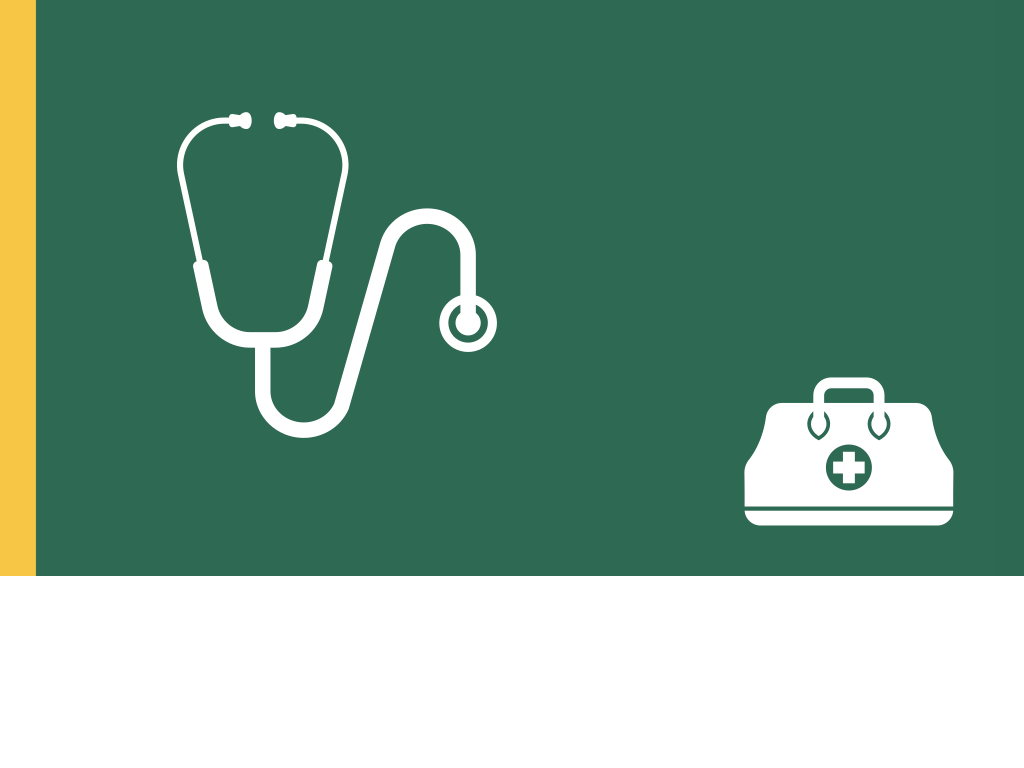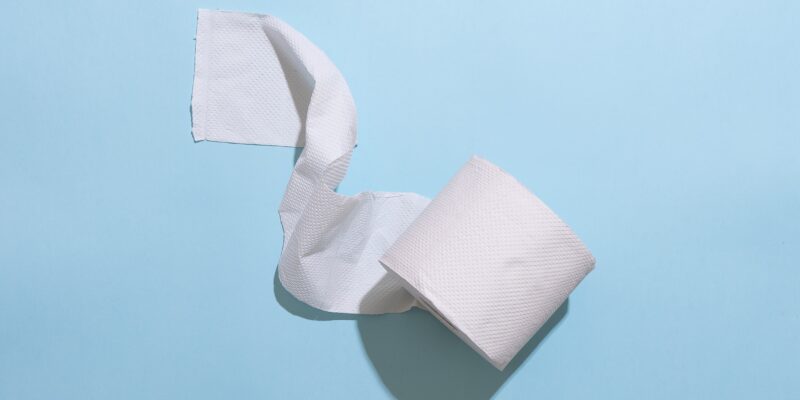Back To:
Toolkit for School NursesHello, and welcome to this presentation about medical treatment for functional constipation. My name is Kelly Savitri.
While treatment for functional constipation is not particularly complicated, it is rarely easy. My hope is that after watching this presentation, you will feel confident helping families to navigate the challenges during what is often a long and frustrating journey with this condition.
Medical treatment for functional constipation involves long-term laxative therapy. The most common medication utilized is polyethylene glycol, also known as PEG or MiraLax. This is because is it has been shown to be the safest, most effective, and easiest to administer, but it is not the only option. The most important thing to understand is that the goal of treatment is to remove any impaction that has created a distended colon, and then to facilitate elimination so that the colon can return to its normal size and function.
The two phases of therapy are disimpaction, also known as a “cleanout,” and maintenance therapy. To help parents and guardians understand this, I often compare changes in the muscles of the large intestine to the changes in abdominal muscles when a person is pregnant. During pregnancy, the abdominal muscles get stretched out and become weak. As soon as the baby is born, those muscles don’t immediately go back to their original size and function. It takes weeks or months and sometimes requires physical therapy. It’s the same thing with the muscles of the colon. The rectum is distended and weak and can easily fill back up again. If impaction occurs again, you basically need to restart the process from square one. That is why maintenance treatment is so important.
So, let’s talk about phase one. A cleanout involves administering higher than usual doses of laxatives to completely clear any impacted stool from the colon. In our work with families, we frequently encounter providers who hesitate to prescribe disimpaction for children and choose instead to try a maintenance dose of MiraLAX first. Now, I understand, in most medical situations we want to start low and go slow. Unfortunately, skipping disimpaction is rarely effective and often causes barriers to treatment further down the road.
So, just consider the physiology of encopresis. If a child is constipated, their colon contains a blockage of hard dry stool, but behind that blockage, there is very soft or even liquid stool. The MiraLAX works on both stool consistencies simultaneously. It slowly begins to soften the impaction, but it also adds more liquid to the already soft stool, causing more leakage and more accidents. Parents usually interpret this as diarrhea and they thinks it means that the dose of MiraLAX was too high or that their child is particularly sensitive to it, and they either reduce the dose or stop administering it completely. The child soon becomes constipated again, so they resume a routine laxative dose, and they get the same results.
We call this the constipation carousel. It is extremely frustrating for caregivers and causes them to think that MiraLAX simply doesn’t work for their child. They often develop resistance to trying MiraLAX in the future because of this negative association. If a provider wants to try a moderate dose of MiraLax, for example, a half of a capful without doing a cleanout, I just caution the parents or guardians about this possible outcome and let them know that if that dose seems to cause liquid stools, they should go back to their provider and discuss the possibility of doing a cleanout.
Now, a cleanout can be intimidating. That’s why we have a video and a handout to tell parents what to expect and how they might want to prepare. It’s also helpful to let the classroom staff know when a cleanout is happening. Even if it mostly takes place on a weekend, the child still might have some loose stools when they return to school, and it is probably in everyone’s best interest to have them wear a barrier garment until their stool is solid again. School staff should know that this is not an indication of a child being sick, but an expected result of the medical procedure that they are doing.
Immediately after doing a cleanout, the child should start receiving a more moderate daily dose of laxatives to prevent constipation from recurring. Remember, those muscles and stretch receptors can take a long time to return to normal function. The child still might not be able to recognize the sensation of a full bowel or bladder for quite a while. It often depends on how long they have been experiencing constipation. It’s important to monitor bowel movements during this time to determine whether the maintenance medication regimen is working. The goal is to have at least one full type 4 bowel movement daily.
Even with consistent medication administration, some children’s colons will tend to fill back up because they are still all stretched out. It is not uncommon for children to have to undergo repeated cleanouts, especially if they are older children who have been dealing with this for a long time. Keep in mind that a relapse can essentially reset the treatment clock. When parents struggle to consistently administer laxatives at home, it can be helpful to administer it at school. Just keep in mind that when they come back from a school vacation, they likely have had a lapse in med administration.
The maintenance phase is when you want to implement nutrition and behavioral interventions, so that new routines can be well-established when it’s time to wean off medication. This is also when you want to ensure that the child has appropriate accommodations at school. I’ll tell you more about those in our next presentation about supports in a school setting. Children’s bowel movements are going to naturally vary depending on variables such as diet, activity, hydration, changes in routine, and illness. It can be difficult for caregivers to know when laxatives need to be increased or decreased. In the toolkit, we have included this constipation action plan developed by specialists at Walter Reed Medical center. It is modeled after an asthma action plan and designed to be customized by the child’s PCP to help caregivers know how to adjust dosages. It is important to continue to monitor bowel movements and other symptoms to determine if a child is in the green, yellow, or red zones.
Sometimes school personnel think that laxative medications will cause a child to have soiling accidents all day. As the school nurse, you can shed some light on these misconceptions and be a powerful advocate. Children should not be excluded from school activities due to their medical treatment. An effective laxative treatment plan will reduce soiling accidents when encopresis is resolved.
It’s very important for parents to understand that the maintenance medication should be administered every day to proactively prevent the colon from becoming impacted again. If parents wait until the child is demonstrating symptoms of constipation and administer a laxative as needed, then impaction is already taking place, and the colon is already being stretched out again.
Sometimes it’s a struggle to get kids to take their laxative medication. Parents often report that the child will refuse a drink if they suspect that there is medication in it. Some ways to hide it are to mix it either the night before or early in the morning before the child wakes and/or put it in an opaque cup with a lid so they can’t see any residual foam. Also, if they don’t like juice or water, try things like applesauce, oatmeal, smoothies, popsicles, lemonade, or Gatorade. MiraLax is a very flexible medication. The child doesn’t have to drink it all at once. The parent can serve it in the morning and then put it in the fridge for later if they don’t finish it.
Techniques to hide MiraLax might work for younger children, but it becomes increasingly harder as children get older. At a certain age, you really need to get their cooperation, so there might need to be an incentive involved, such as a preferred activity after they drink their medicine.
Some parents are hesitant about long-term laxative use, which can lead to less medication adherence. Most laxatives including MiraLax have instructions on the bottle that say not to take it for more than 7 days. We need to explain to parents that that’s for people who are taking it over the counter without instruction from a doctor. If their healthcare provider has prescribed something for their child as a maintenance medication, they should continue to administer it until their provider gives them a plan to wean off it.
It’s important that parents understand why their provider has prescribed the treatment plan and what the goals are. As nurses, you should know that many parents will attempt to try other therapies either in addition to or instead of conventional treatment. Conventional treatment takes a long time, and studies have shown that 40% of children will still be symptomatic after a full year, so it’s understandable that parents may try to explore other options. Certain complementary therapies have demonstrated a degree of effectiveness such as scheduled toilet sits, cognitive behavioral therapy, biofeedback, and pelvic floor physiotherapy, but not every intervention works for every child and parents need to know that this is in addition to laxative medication, not instead of it. Of course,
MiraLax and Ex-Lax are not the only laxatives available. Other treatment protocols include lactulose, mineral oil, glycerin suppositories, milk of magnesium, or enemas. We have also encountered naturopathic practitioners who recommend vitamin C or Magnesium Citrate as an alternative to pharmaceuticals. These alternative therapies can have their own challenges and side effects. The important thing that we want to stress to parents is that even supplements like vitamin C or Magnesium have safe dosage limits, so any treatment plan should be approved by and closely monitored by a licensed healthcare provider.
So, what about diet? We know that a low-fiber diet is associated with constipation, so nutrition interventions may be part of a comprehensive plan in the long run. It’s important to understand that dietary changes alone are not a sufficient treatment for functional constipation, but helping children to develop healthy eating habits can be a complementary part of the maintenance phase of therapy. Check out the Continence Project video resource library for more specific advice about nutrition, including tips for picky eaters.
When children are babies, they seem to have an innate sense of how to expel a poop, but many children who experience functional constipation lose this sense. They might willingly sit on the toilet at scheduled times but have no idea what they are physically supposed to do while they are sitting. Actions that involve the breathing diaphragm and the abdominal muscles can help children learn how to recruit the necessary muscles for defecation. Some ideas include blowing bubbles, pretending to blow out candles on a birthday cake, or blowing a pinwheel or similar party favor. These activities have the added benefit of making toileting time a little less serious and a little more entertaining.
The key message for parents in the initial stages of diagnosis and treatment is that this is a medical problem that requires treatment. It is not going to go away on its own. Understand that parents often feel ashamed, frustrated, and overwhelmed. They need someone who is going to be understanding and supportive. School staff may feel frustrated as well, but extra pressure on parents is not going to solve the problem any faster. Parents frequently report that their lives revolve around bathroom habits, toileting, medication, food, fecal leakage, and bowel movements, and many will avoid travel and social events because they can’t predict when a soiling accident is going to occur.
So, what do we do about parental stress and the conflict that occurs when a family has been working on potty training for a long time without success? The initial cleanout and early maintenance treatment is a good time for a pause. If there is a history of withholding, it is more important for the child to be consistently emptying their bowels than it is for them to be doing it on the toilet. Remember, the primary goal of medical treatment is to give the muscles of the colon the opportunity to regain normal size and function. Pushing the child too hard to do something that they are afraid of can backfire and cause more withholding. Literature has demonstrated that when parents understand that this is a medical issue and their child is not just being lazy or stubborn, they are more likely to adopt an attitude of worrying and helping rather than blaming and punishing.
Many parents tend to measure how well the plan is working by how many soiling accidents a child is having. This can be a problem because sometimes a decrease in accidents is a sign of increased withholding. When the child starts experiencing encopresis again, parents mistakenly interpret this as a regression in the child’s behavior. That’s why we want to emphasize the importance of bowel monitoring. Success should be measured by consistently emptying the bowels without pain or strain, regardless of where that is happening.
So, how does this end? The official guidance in the literature says that maintenance treatment should continue for a minimum of 2 months. Our experience is that it is often a lot longer than that. Frequently, the process is one of two-steps-forward-one-step-back. At the very least, children should be completely free of symptoms for at least 1 month before weaning medication. Also, if there are behaviors such as withholding, avoidance, or fear of toileting, these need to be resolved before weaning.
When medication is reduced, it should happen slowly, with diligent bowel monitoring. Consider what triggered the constipation in the first place. If the child is still an extremely picky eater with a very restricted low-fiber diet, they may need to continue on some sort of bowel support for a much longer time frame. Statistics demonstrate that 40-50% of children will have at least 1 relapse in the first 1-5 years after initial recovery, so we really must stay watchful for signs and symptoms even when things seem to have resolved.
The most common reasons that children experience prolonged symptoms despite treatment are lack of disimpaction, poor medication adherence, and early weaning off medication. The most influential factor in whether a child achieves full recovery is how quickly functional constipation is identified and treated. 80% of children who are treated early will experience full recovery, while that number drops to just 32% when there is a significant delay in treatment.
As healthcare professionals in the school setting, school nurses are in an ideal position to recognize the signs and symptoms of functional constipation and advocate for early treatment.
Thank you for your time. The information contained in this video is for informational purposes only. It is not a substitute for professional health or medical advice, diagnosis, or treatment. Always seek the advice of your physician or other qualified healthcare provider.
Next resource:
Accommodations and Support for Functional Constipation in the School Setting


